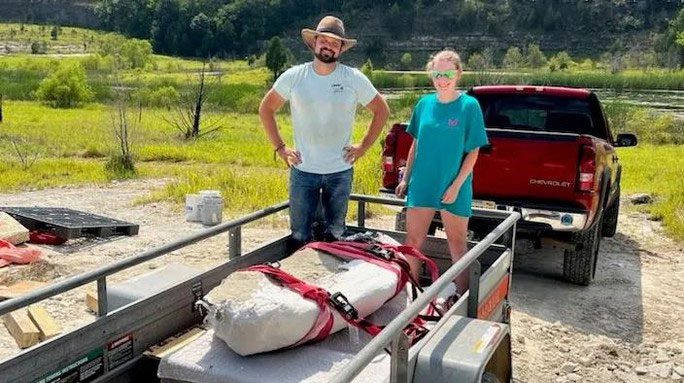A 16-year-old girl in Alabama, USA, had a memorable summer when she unearthed a giant 34-million-year-old fossilized head of a marine monster right on her family’s land.
According to Live Science, the young girl and her teacher decided to embark on a “summer excavation” after shark teeth had previously been found in the area, an indication that her family’s land was situated over an ancient “sea monster ocean.”
The 16-year-old, named Lindsey Stallworth, made a discovery far more significant than shark teeth: the giant fossil they found has been identified as the head of a whale.

A part of the fossil unearthed by the two in Alabama – (Photo provided by the individual).
This fossil belongs to an extinct carnivorous whale species that lived during the Eocene epoch (from 56 to 33.9 million years ago), a transitional period of the Paleogene period. At that time, sea levels were high, and the entire state of Alabama was a shallow ocean.
The giant fossil head protruded from a small hill on the property. After discovering the first visible part, the American teenager and her teacher patiently excavated with chisels and dental tools for a week, revealing a large tooth from the animal’s lower jaw.
The image of the tooth was sent by the teacher, Andrew Gentry, to his friend Dr. James Parham, a paleontologist at California State University, Fullerton.
Dr. Parham then forwarded the images to Dr. Jorge Velez-Juarbe from the Natural History Museum of Los Angeles, an expert in marine mammal fossils.
The fossil was quickly dated, but the exact species it belongs to has not yet been determined.
However, the area where the marine monster was uncovered is known to have been home to many species of primitive whales that have been analyzed, including those from the giant Basilosauridae family, with some species reaching lengths of up to 18 meters.
Archaeologists believe the new specimen may belong to a previously unknown species of this family, potentially comparable in size to the record-holding 18-meter whale mentioned above.
It is estimated that it will take several months for archaeologists to extract the entire skull and any remaining body parts of the marine monster from the rock and conduct further studies.


















































